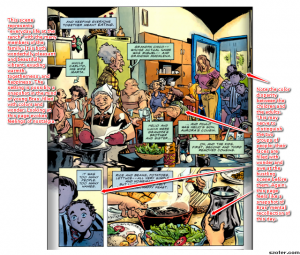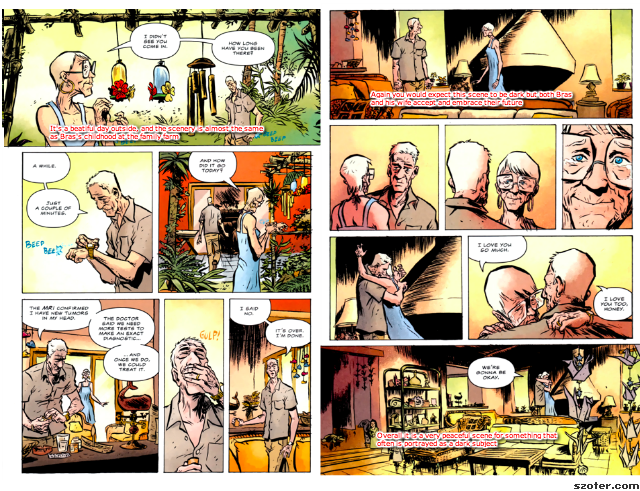I really enjoy reading graphic novels. I prefer them to any other literary experience, because their format allows me to almost instantly immerse myself in the different visual worlds on the pages. The first graphic novel I read in full was The Killing Joke, by Alan Moore; since then, I have spent many hours poring through the artwork, frames, and dialogue of all types of graphic novels. However, Daytripper, by Ba and Moon, is a one-of-a-kind experience that I have not had before. The story follows the entire lifetime of Bras de Oliva Domingos, starting from his birth to the final days of his life. This ten-issue novel presents different stages of his life in chapters in a non-chronological order. At the end of each chapter, Bras suddenly and unexpectedly dies. However, each chapter follows the previous with no acknowledgement of the death that immediately precedes it. Each death is thus a hypothetical scenario that ends that particular stage or event in Bras’ life.
One of the most powerful tools that graphic novels have at their disposal that traditional literature does not is the artwork. It often has visual subtleties or stark imagery that can affect the reader both mentally and physically on a subconscious level. Among other things, these annotations highlight the importance of one element of the novel’s graphics within the frames: lighting.
What makes this work so profound is the emotional introspection it evokes in the reader. The deaths that occur happen at very pivotal moments in Bras’ life, asking the heavy question “If I died today, what would I have to show for my life?” It is not until the final chapter of the novel that the reader understands what each of these deaths represents – Bras considers how his life, legacy, and the lives of those around him would be different had things ended during the moments he considers the most important his life. This made me think about my life from a larger perspective; stepping back from the microcosm of a college campus and the daily grind of academia, I wonder if the way I choose to live my life may merely scratching the surface of the potential life experiences I could be living. The book’s keen ability to make its audience think about such profound topics is a testament to the power of graphic novels as a medium and its value as a method of storytelling.








